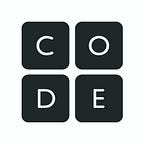With Code.org’s new curriculum, the underrepresentation of minorities in computer science isn’t about lack of interest, but lack of access
Note: As of September 2020, this post contains outdated language or graphics referencing “underrepresented minorities.” To see our current language policy around race, ethnicity, and gender, see this support article.
Black, Latinx, American Indian, and Native Pacific Islander students are dramatically underrepresented in university computer science departments. Despite making up nearly 50% of the US student population, in 2015, they represented just 17% of CS majors. And high school AP Computer Science exam rates reflect the same dramatic underrepresentation.
All students want to learn CS, regardless of race
But why is there a serious diversity issue in computer science? Is it because underrepresented minorities choose not to take CS courses? Research from Google and Gallup suggests the opposite: that black students are more likely to be interested in learning computer science and more confident in their ability to learn. But less than half of high schools that black students attend even offer computer science courses.
What happens when a school does offer a Code.org course designed to promote equity and encourage diverse students? We ran an analysis on our high school CS Principles classrooms, and, it turns out that underrepresented minorities do choose to sign up for our CS classes at much higher rates than national AP data would suggest.
Code.org curriculum and programs deliver balanced diversity
This chart shows the data from hundreds of Code.org computer science classrooms — we’ve compared the percent of underrepresented minorities at the school to the percent among students who enroll in our courses. The orange dots represent computer science classrooms that are more diverse than the school as a whole. The blue dots are those that are less diverse.
Almost 40% of Code.org classrooms are more diverse than the school as a whole and most of our classrooms track close to an even balance. When teachers and administrators in diverse schools offer Code.org curriculum designed to support underrepresented minorities, the participation in high schools dramatically exceeds the nationwide numbers and the reality of the tech industry today.
How did Code.org achieve these results?
Addressing diversity issues is foundational to our work and is woven throughout our programs — especially in our curriculum and teacher professional learning. It starts with our outreach team which looks for urban and rural schools with diverse populations. Through our regional partners, we offer professional development for administrators and counselors — to build awareness of stereotypes and help educators encourage diverse students to try computer science.
The passionate teachers we prepare to teach computer science learn about equity in CS and encouraging underrepresented minorities during their workshops. They champion these students and work hard to make them feel welcome in the classroom.
But, the very best people to recruit students into any class are their friends. We knew we had to make a course that appeals to all students.
Using best practices from equity research, our curriculum encourages students to realize the impact of computing in their own lives and use computer science to solve problems they personally care about. Short video lectures from diverse role models inspire students throughout the class. And, our platform is designed for schools with older computers, where students often don’t have access to a computer at home.
Of course, we have a long way to go
We’re proud of the impact our amazing teachers have had over the last four years and the fact that Code.org students are 45% female and 48% underrepresented minority. We clearly have a ways to go — overall, underrepresented minorities are not enrolling in computer science classes at the same rate as their white and Asian peers. However, we’re continually encouraged by the progress we’ve seen, and we’re looking forward to seeing how these students make their mark on the world.
Alice Steinglass, President, Code.org
P.S. Thanks to Tableau Foundation for donating Tableau to support our data analysis.
